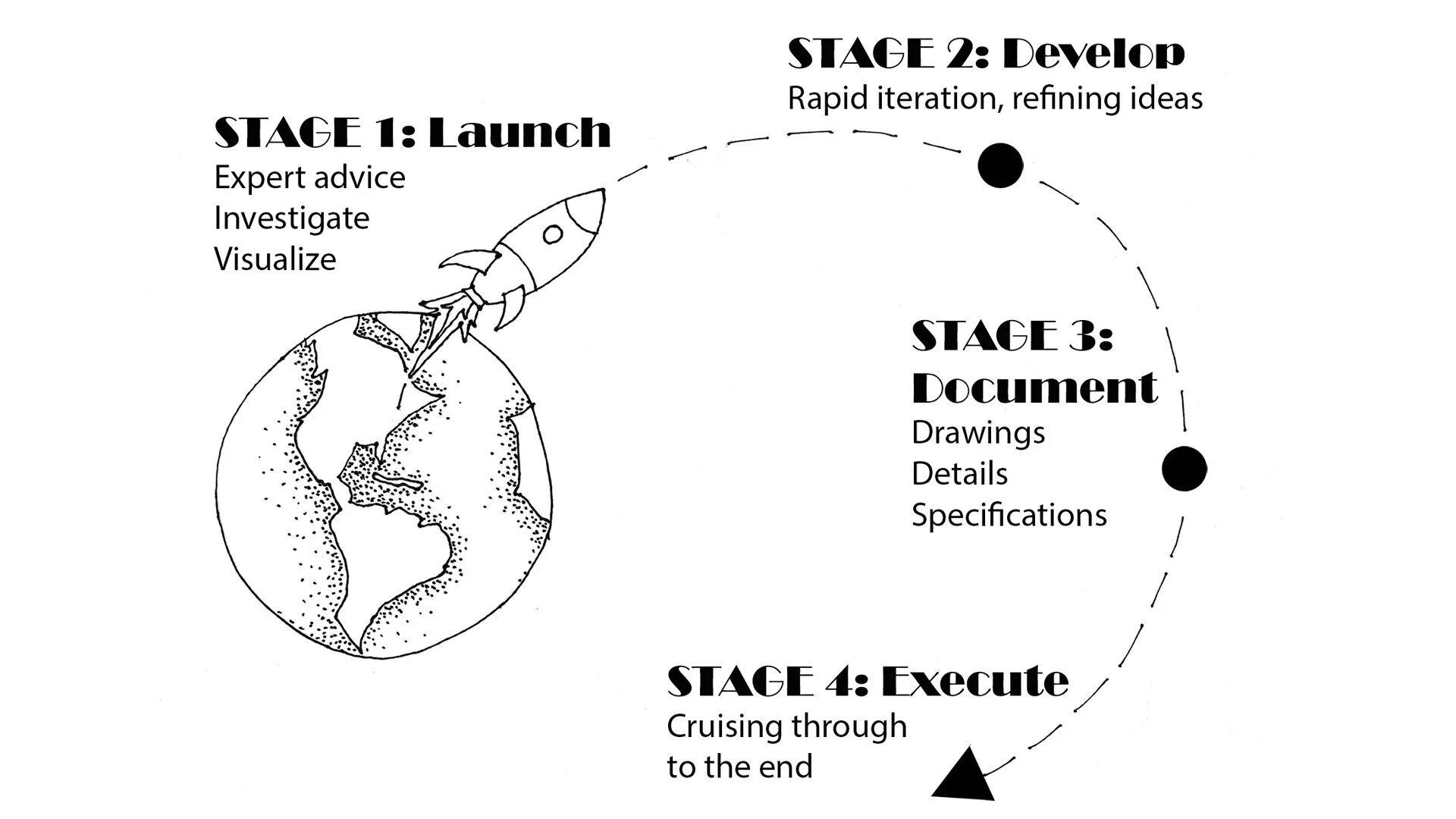
Are You Focusing On The Right Things?
If you've got a logo figured out but don't have a strategy for how you're going to execute your building project, you may not be focusing on the right things, and I see this a lot with business owners and entrepreneurs.

Building (and Not Building) a Climbing Gym: 3 Insights From Ryan Studio
First of all, apologies for the lack of newsletter content, but I’m back, with all sorts of things to share.
I’ve been working on this article for Climbing Business Journal for a while now, and I’m happy to share it with you all.
It’s intended to be for anyone who’s considering a climbing or fitness facility, but like all of my writing, the intent/ hope/ aspiration is for it to be interesting and digestible for anyone.

New Businesses Don’t Know What They Don’t Know
New and early-stage businesses often benefit tremendously from a little bit of assistance, at the very beginning of their project development cycle. The issue is that most businesses wait because they think they don't have the budget, but there are massive pitfalls that can be avoided with a little bit of assistance, and very often, people just don't know what to look for, or watch out for, when a business is so young.
I continue to witness the impact that this early stage work can have to help support business growth and development, while reducing the risk as much as possible.
Over the last few months, I've been advising several new and young-but-growing businesses as they work on their first location, or as they develop their growth plans. Sometimes, part of the job is helping them unwind unfortunate decisions that should not have been made, and could have been avoided, with even just a little bit of assistance.
To that end, this is about helping more people make sure their project is set in the right direction, without having them put out a lot of cash upfront.

Supertall: Only in NYC
The “supertall” buildings that have gone up in NYC bring together a combination of zoning questions, building department issues, and ethical questions that are a result of NYC’s unique rules and regulations.
The bottom line is that there’s a lot that’s just only possible in New York…

Commercial Projects & Checklists
I focus on the early stage of projects because if we can get the deepest, most meaningful questions answered properly, then everything that follows has a clear reference point, and we already know where we are going. We achieve clarity, and have a goal to aim for, which gets us through a lot of uncertainty that can be present in projects.
We do this with test fits, feasibility studies, looking at new concepts, reimagining or examining existing concepts, or just imagining and visualizing what’s possible.
These deliverables however, are just the tactics we use to achieve our higher goals and to see impactful results.
These are results like funding your business and getting investment support or community buy-in. Being able to open faster. Or validating and demonstrating a business model by combining numbers and visualizations that just make sense and knock people over.

Not What I Thought: Virgil Abloh, RIP
Virgil Abloh passed away this past weekend, and I came across a lecture he gave at my grad school alma mater, which gave me a very different understanding of his work, his intentions, and his personality.
Turns out, I was wrong about a lot of it. I still don’t understand why athletes would play their sport with plastic tags hanging off their shoes, and the extensive use of “quotation marks” still seems over-used to me, but listening to the man himself talk was a wonderfully eye-opening experience.

Reasonable Doubt and Architecture
I’m a believer that Architecture is closer to the practice of law rather than an art or science. I see that as an opportunity to free ourselves from the proof required in science and the subjectivity of art.
To me, it’s the balance of artistic license and practical considerations that makes Architecture the unique and lifelong “practice” that it is.

Color & Pattern
There are very few things in natural color and patterns that are completely haphazard. For the most part, the use of color and pattern in nature has developed over time, with specific intentions that help with survival in some way.
It’s not that we need to mimic the complicated patterns we see in nature in our buildings and objects, because the intent and purpose is very different.
We can however, choose to use patterns and color in useful and intentional ways, which can not only add depth and excitement, but help people understand what’s going on in our built environment.

Accessible Architecture
I believe that there should be a more Accessible Architecture that helps clients answer key questions, doesn't cost a ton to get started, and should provide tremendous value for you very quickly.